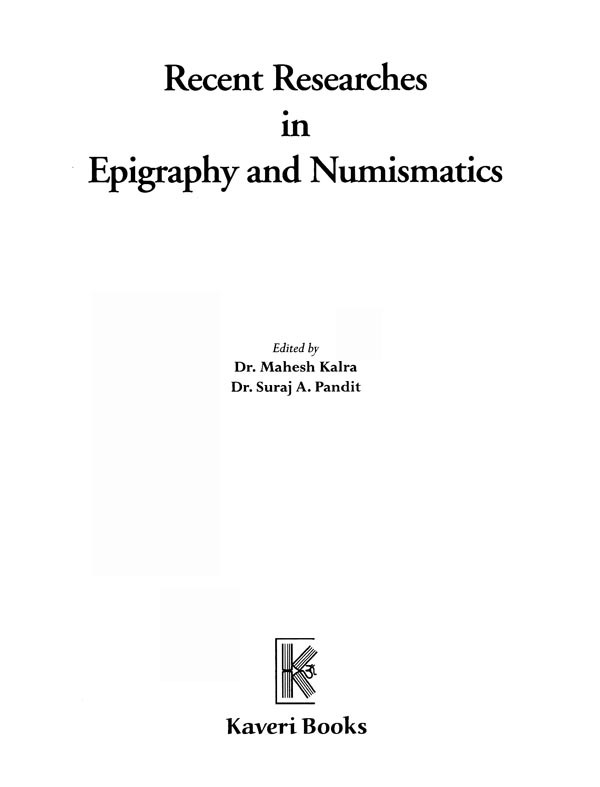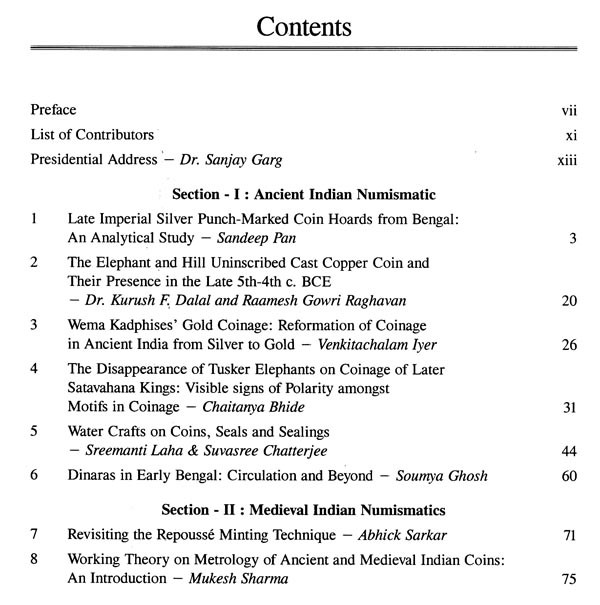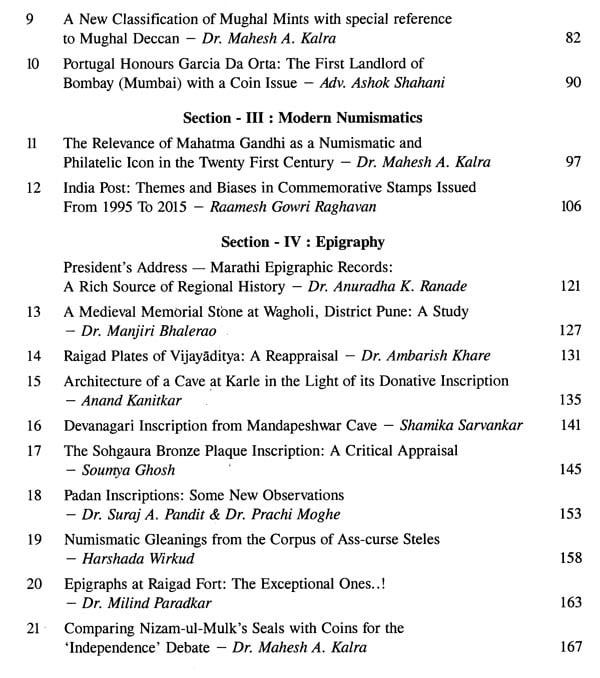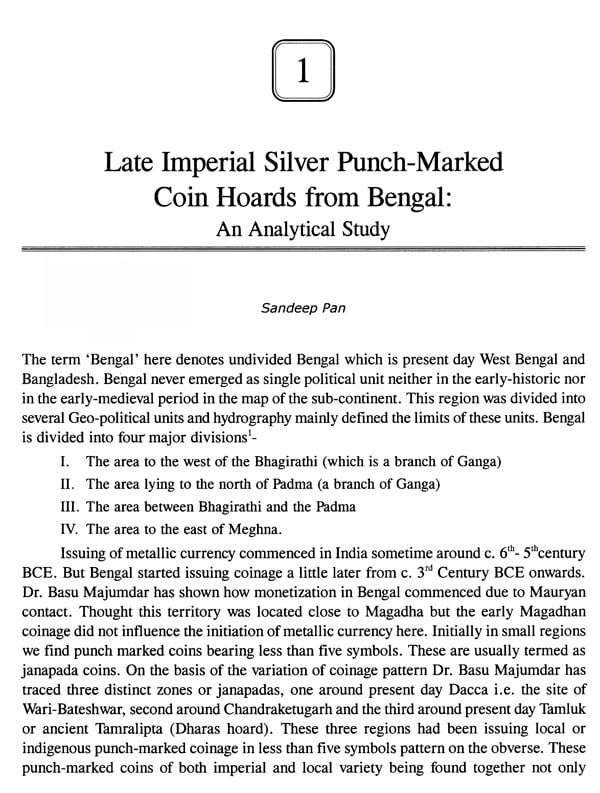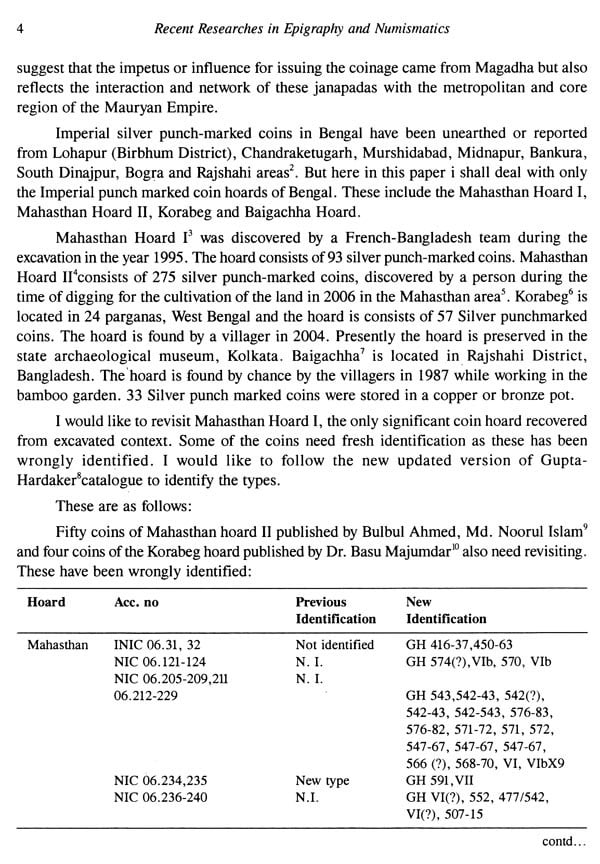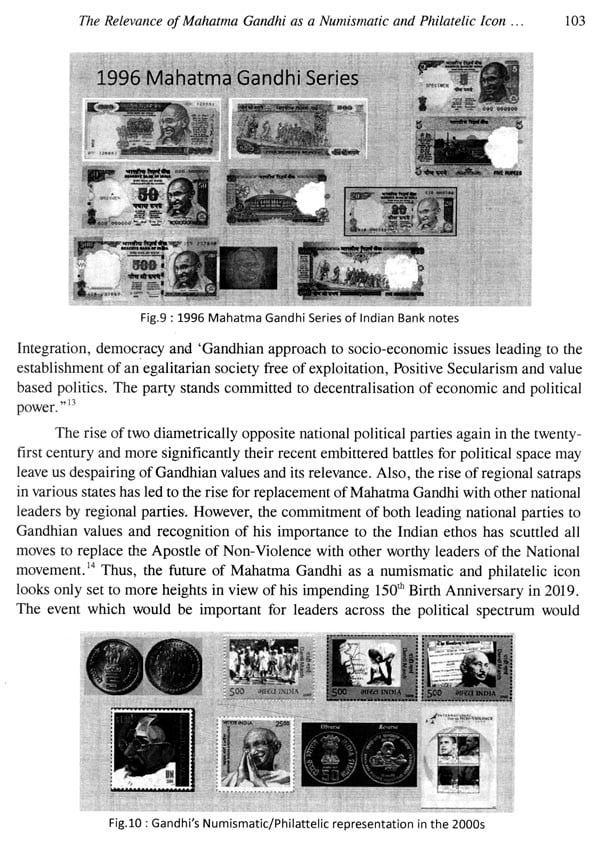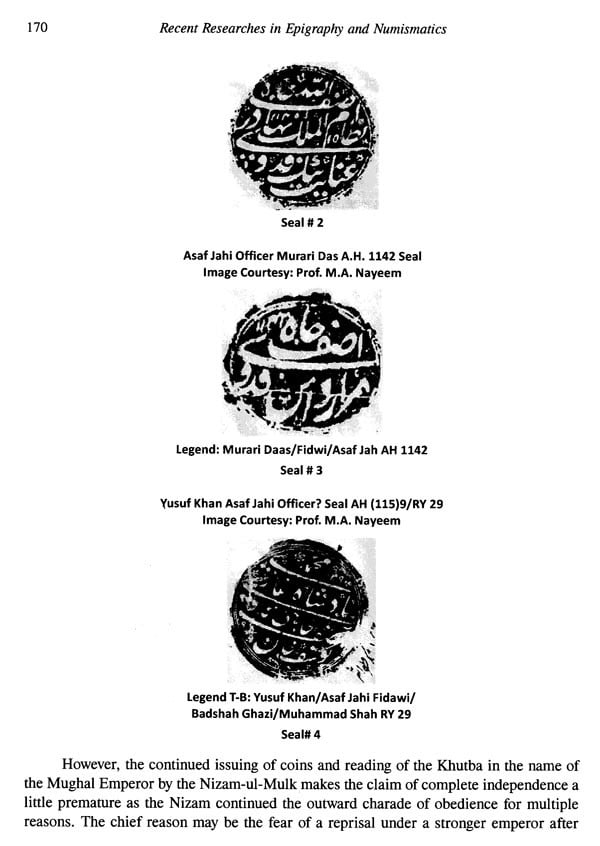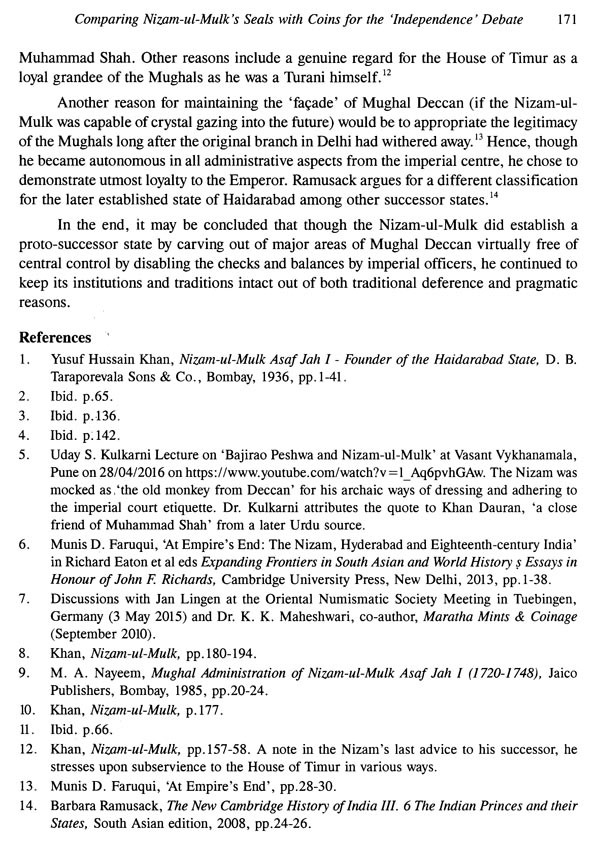
Recent Researches in Epigraphy and Numismatics
Book Specification
| Item Code: | AZG305 |
| Author: | Mahesh Kalra and Suraj A. Pandit |
| Publisher: | KAVERI BOOKS |
| Language: | ENGLISH |
| Edition: | 2018 |
| ISBN: | 9788174792181 |
| Pages: | 196 (Throughout B/w Illustrations) |
| Cover: | HARDCOVER |
| Other Details | 10.00x7.50 inch |
| Weight | 640 gm |
Book Description
These papers were presented at Nat Num Conf 2016 held on 24 and 25 December 2016 at Sathaye College, Mumbai by Centre for History Archaeology Epigraphy & Numismatics (CHAEN) in association with the Ancient Indian Culture Department, Sathaye College. These articles, with notes, references and bibliography are well illustrated and are grouped into four sections, viz. Section-I: Ancient Indian Numismatic; Section-II: Medieval Indian Numismatic; Section-III: Modern Numismatic; and Section-IV: Epigraphy.
Dr. Suraj A. Pandit is a trend archaeologist and who has worked in the fields of Buddhist Archaeology, Urban Archaeology and Epigraphy. He is presently Head of the Department of Ancient Indian Culture and the Department of Buddhist Studies at Sathaye College, Mumbai. His specialization is 'Western Indian Rock Cut Architecture'. He is known for his research on Kanheri Caves. He has completed several research projects and also working as a consultant for Heritage Conservation projects.
Dr. P. L. Gupta's unique contribution to Indian Numismatics was to string various coin series together for the first time since the study of Indian Numismatics began in the colonial period by the great orientalists from British civil and military cadre beginning with James Prinsep, Alexander Cunningham and in succession by numerous other Indian and British orientalists till India's independence in the middle of the twentieth century. However, most numismatists studied Indian numismatics as a set of series classified as local or imperial series, ancient, medieval or modern or based on dynasties of various periods of India's long history. It was Dr. P. L. Gupta's unique contribution of connecting these heterogenous series as pearls with a string to form the necklace of Indian Numismatics Another major contribution of Dr. P. L. Gupta was to mentor a whole generation of numismatic researchers with focus on only academic study of Indian coinages with a firm emphasis on mastering scripts, coin types and various other features of Indian coin series.
Dr. P. L. Gupta's book 'COINS' has been a beacon of light to many generations of students of History and Numismatics, usually serving a first work of introduction to a subject of gigantic proportions related to India's tradition of continuous issuing of coins of different types for over two-and-half-millennia. Though termed as 'outdated' in some quarters, the book is yet to be replaced by another standard work of reference despite almost five decades since it first appeared. Its continued publication and popularity remains undented and yet it is a very simplistic work on a subject easily understood by the uninitiated.
**Contents and Sample Pages**
